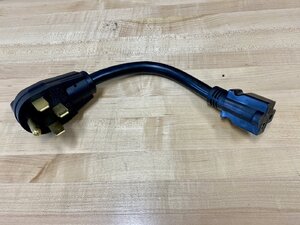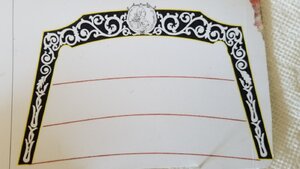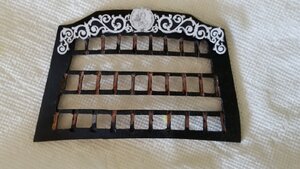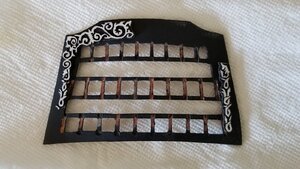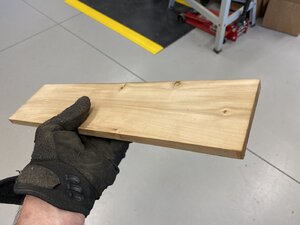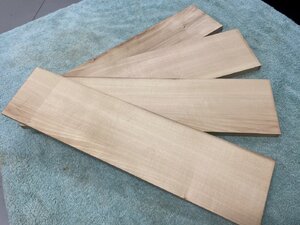Hello everyone. So let us jump over to the world of CNC carving. Computer Numerical Control (CNC) is a computer controlled machine tool that basically runs on and x/y (left/right) gantry and also has a certain amount of z-axis (up/down) travel. Educational/hobby style CNC tools might be purchased or assembled for several hundred dollars or you could see CNC machines in automotive, aerospace, or Formula 1 industries in the millions of dollars. Many people refer to them as CNC Routers because common woodworking or furniture making CNC machines use a router mounted in the gantry to spin the bits. For precise miniature model work we need higher end equipment. My CNC machine is made by ShopBot Tools right here in North Carolina USA and features a Bosch High Speed Spindle. For you woodworking fanatics my dust collection is provided by Festool. Gotta love German engineering. Ok, enough of the hardware... What are we gonna "make" today?
As we can see in the Hahn picture below, our 1:64 Alfred prototype needs some lettering on the stern. I haven't found those on Dave's massive CAD drawings yet so let's see if we can make our own and then carve them in 3D on the CNC machine. First, we had to search through our huge
font library and find one that matches the Alfred lettering that was hand carved by Hahn. The match I found was Bodini Book Normal. I typed out the word ALFRED in my CAD software and then scaled it to fit the area below the stern windows we had already created. I found this font size to be 46.856pt for 1:64 scale. Ok, easy enough.
Next, I used Vectric Aspire's
Create 3D Shape function -
Flat and added about
9degrees of curve to the top. I set the overall thickness of the letters to be 0.125" and added .0625" to the base for a total of about 3/16" tall. I inserted the letters into a 1/2" virtual slab of wood and moved over to the tool path simulator to select bits and run simulations over and over and over until I got the results we needed. All of this work took several hours. But once done... it is done forever!! I sent the CAD over to my post-processor to create CNC code and warmed up the high-speed spindle for 10 minutes.
Some of us cannot carve like Harold Hahn so we need help!!
View attachment 164149
This project will consist of 2 jobs. First we will use a 1/8" Carbide Ballnose (upper bit) to
rough out all the excess wood from the billet. Then we will change over to a 1/16" Tapered Ballnose for
finishing and
cutout. We will use an Onsrud 1/4" hardened steel shank holder to secure the bits in the spindle. Each of these bits go for nearly $100 a piece.
View attachment 164150
When CNC carving small, highly detailed parts we want to use the hardest, tightest grained wood we can. Boxwood and Pear are two of the best. For this prototype I have selected a 1/2" slab of hard maple. Clamp it down to the spoil board with some good Rockler clamps. We could also use screws.
View attachment 164161
Although the billet is labeled as 1/2", for precise CNC machining we must ALWAYS measure it. This billet is actual 0.518" thick. We install the first bit and then zero the z-axis against the touch plate on the spoil board. Since we will be carving all the way through the wood, we set our z-axis zero to the surface of the spoil board and not the surface of the billet. When the steel bit makes contact with the plate a small electrical circuit is made and the computer zero's out. The thickness of the plate is already factored in.
View attachment 164166
We fire up the job and we are off. The 1/8" ballnose bit will spin at 14,000 rpm while the CNC machine executes 7825 lines of code. We can monitor the job progress on the laptop sitting next to the machine.
View attachment 164167
The roughing job took 20 minutes to complete. This could have been greatly reduced had I used a 1/4" billet instead of 1/2". You see the result of the roughing job below. It looks horrible!!! What went wrong?????
View attachment 164168
Nothing went wrong. Time to install the 1/16" Tapered Ballnose, spin that sucker at 18,000 rpm, executing over 25,000 lines of code for 26 minutes. This is where the magic happens.
View attachment 164169
What emerges is this mess!! Ah, but looks can be deceiving.
View attachment 164171
The letters are removed from the billet attached to a paper thin wafer of hard maple.
View attachment 164173
This is where our prototype builders would get involved. The maple backing is so thin we simply cut the letter out with scissors.
View attachment 164175
Spend a few minutes cleaning them up. I really did not put much effort in here. After all, these are only prototypes.
View attachment 164176
Finally, we mock them up against the stern windows we already made. Looks pretty good for a first prototype. The letters are actually thicker than they would be on the final model. This is on purpose. The modeler would thin them down from the backside using their Byrnes Disk Sander to a final thickness of about 1/16" and then carefully glue them to the black planking wales on the stern.
View attachment 164177
Another view to see the carved 3D shape. The end result is just a hair over 1/8" thick at 0.14". These are in hard maple. We could easily get a lot more definition out of boxwood or pear. A few more prototypes and simulation runs and we could bang them out by the hundreds. As you can see, CNC is both much more complicated and a lot slower than using a laser. But the results that can be obtained are nearly limitless. I skipped over a lot of details, otherwise this would have been a book. But there you go.... questions, comments, feedback always welcome!!
View attachment 164178






